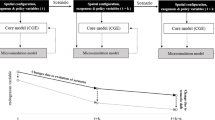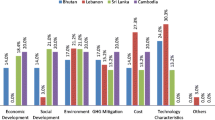Abstract
Transportation accounts for 24% of global CO2 emissions; according to the current trends, energy use and CO2 emissions associated with this sector are projected to increase by more than 80% by 2050. Following UN Recommendations, EU Directives and Policies prioritising the transition to more clean modes of transport, the O.A.S.A Group (Group) estimated its annual environmental footprint. Specifically, the Group quantified the impact of its activities (transport-related and others) on the environment aiming at the integration of the environmental parameter into the decision-making process. 2019 was the baseline year for all estimations performed; the study estimated the carbon (and other) emissions from the transport fleet (direct emissions), as well as carbon emissions and carbon removals from the Group’s other supporting activities (indirect emissions). A mix of internationally recognised methodologies (i.e., EMEP/EEA 2020, 2006 IPCC Guidelines), activity data and emission factors were used and applied in the study. The study highlights the positive impact of the Group to the environment, justifying that – without its existence - approximately 200,000 tn of CO2 would be emitted annually in the metropolitan area of Athens. Electricity consumption of the electrified transport means is the Group’s most critical CO2 emission source overall (approx. 40%). Diesel-buses come first amongst all transport means, accounting for approximately 35% of direct emissions. The rising share of renewable energy sources in the electricity generation mix, the fleet renewal initiatives and the deployment of electric buses are expected to further improve the Group’s environmental footprint in the future.
Access this chapter
Tax calculation will be finalised at checkout
Purchases are for personal use only
Similar content being viewed by others
Notes
- 1.
Athens Urban Transport Organisation S.A. (O.A.S.A) is the sole shareholder (participation rate 100%) of its subsidiaries transport companies O.SY. S.A. (O.SY) and STA.SY. S.A. (STA.SY). The three companies constitute the O.A.S.A Group (Group). O.SY is the distinctive title of the company called “Road Transport S.A.”, that provides urban transportation services with thermal (diesel and CNG) and trolley-buses in the Attica Region. STA.SY is the distinctive title of the company called “Urban Rail Transport S.A.”, that provides urban transportation services with metro (line 2, line 3), urban electric railway (line 1) and tram in the Attica Region [20].
- 2.
- 3.
References
Anderson, R., Maxwell, R., Harris, N.G.: Maximising the Potential for Metros to Reduce Energy Consumption and Deliver Low-Carbon Transportation in Cities. CoMET and Nova Groups/ Imperial College London, London (2009)
APTA: Public Transportation Reduces Greenhouse Gases and Conserves Energy. The Benefits of Public Transportation. American Public Transportation Association (2008)
Beer, Τ., Grant, Τ., Morgan, G., Lapszewicz, J., Anyon, P., Edwards, J., Nelson, P., Watson, H., Williams, D.: Life-cycle Emissions Analysis of Alternative Fuels for Heavy Vehicles. Australian Greenhouse Office (2000)
Byeongho, L., Sung-Ho, T., Sung Woo, S. Youngho, Y.: Carbon dioxide reduction through urban green space in the case of Sejong City Master Plan. In: SB Seoul International Conference on Sustainable Building Asia, pp. 537–542 (n.d.)
DEFRA: 2008 Guidelines to Defra’s GHG Conversion Factors: Methodology Paper for Transport Emission Factors. Department for Environment, Food and Rural Affairs, AEA (2008)
EC: Sustainable and Smart Mobility Strategy—Putting European transport on track for the future. European Commission (2020)
EC: The New EU Urban Mobility Framework. European Commission (2021)
EMEP/EEA: Air Pollutant Emission Inventory Guidebook 2019—Update Oct. 2020. EMEP/EEA (2020)
FTA: Public Transportation’s Role in Responding to Climate Change. Federal Transit Administration, U.S. Department of Transportation (2010)
IEA, Tracking Transport 2020. https://www.iea.org/reports/tracking-transport-2020. Last accessed 21 Mar 2022
Imperial College: Keeping Metros Competitive—Cost and Carbon Footprint. Case Study—Interim Report. Imperial College (2008)
IPCC: 2006 IPCC Guidelines for National Greenhouse Gas Inventories. Intergovernmental Panel on Climate Change (2006)
ITF: Worldwide transport activity to double, emissions to further increase. https://www.itf-oecd.org/worldwide-transport-activity-double-emissions-rise-further. Last accessed 21 Mar 2022
Lie, K.W., Synnevåg, T.A., Lamb, J.J., Lien, K.M.: The carbon footprint of electrified city buses: a case study in Trondheim, Norway. Energies 14(3), 770 (2021)
Lozzi, G., Rodrigues, M., Marcucci, E., Gatta V., Teoh, T., Ramos, C., Jonkers, E.: Research for TRAN Committee—Sustainable and Smart Urban Transport. European Parliament, Policy Department for Structural and Cohesion Policies, Brussels (2020)
Ministry of Environment and Energy: National Inventory Report of Greece for Greenhouse and Other Gases for the Years 1990–2019. Ministry of Environment and Energy, Athens (2021)
Nanaki, E.A, Koroneos, C.J., Roset, J., Susca, T., Christensen, T.H., De Gregorio Hurtado, S., Rybka, A., Kopitovic, J., Heidrich, O., Amparo López‐Jiménez, P.: Environmental Assessment of 9 European Public Bus Transportation Systems (n.d)
Nylund, N-O., Erkkilä, K., Lappi, M., Ikonen, M.: Transit Bus Emission Study: Comparison of Emissions from Diesel and Natural Gas Buses. VTT Technical Research Centre of Finland, Research Report. Project 3/P5150/04 (2004)
O.SY S.A, https://www.osy.gr/. Last accessed 21 Mar 2022
OASA S.A, https://www.oasa.gr/. Last accessed 21 Mar 2022
OASA S.A: Activity Report 2018. OASA S.A, Athens (2019)
PPC: Sustainability Report 2019. Public Power Corporation (2020)
RAE: Decision no. 248/2021 approval of network distribution loss factors. Regulatory Authority for Energy (2021)
Sehmi, G.S., Stolz, M.: Electric mobility is rising—how can we make the most of it? World Bank, Transport on Development (2021)
SLOCAT: Transport and Climate Change Global Status Report. Tracking Trends in a Time of Change: The Need for Radical Action Towards Sustainable Transport Decarbonisation. 2nd edn. Partnership on Sustainable Low Carbon Transport (2021)
STA.SY S.A., http://www.stasy.gr/index.php?id=13. Last accessed 21 Mar 2022
SuM4All: Sustainable Electric Mobility: Building Blocks and Policy Recommendations. CC BY 3.0, Washington DC (2021)
TFL: London Underground Carbon Footprint Report. Transport for London, London (2008)
UITP: Climate Action and Public Transport. International Association of Public Transport (2014)
UN, Department of Economic and Social Affairs, Population Dynamics: 2018 Revision of World Urbanization Prospects. United Nations (2018)
Author information
Authors and Affiliations
Corresponding author
Editor information
Editors and Affiliations
Rights and permissions
Copyright information
© 2023 The Author(s), under exclusive license to Springer Nature Switzerland AG
About this paper
Cite this paper
Michali, M., Karampourniotis, K., Zafeiriou, P., Vavaliou, L. (2023). Estimating the Environmental Footprint of the O.A.S.A Group. In: Nathanail, E.G., Gavanas, N., Adamos, G. (eds) Smart Energy for Smart Transport. CSUM 2022. Lecture Notes in Intelligent Transportation and Infrastructure. Springer, Cham. https://doi.org/10.1007/978-3-031-23721-8_118
Download citation
DOI: https://doi.org/10.1007/978-3-031-23721-8_118
Published:
Publisher Name: Springer, Cham
Print ISBN: 978-3-031-23720-1
Online ISBN: 978-3-031-23721-8
eBook Packages: EngineeringEngineering (R0)




